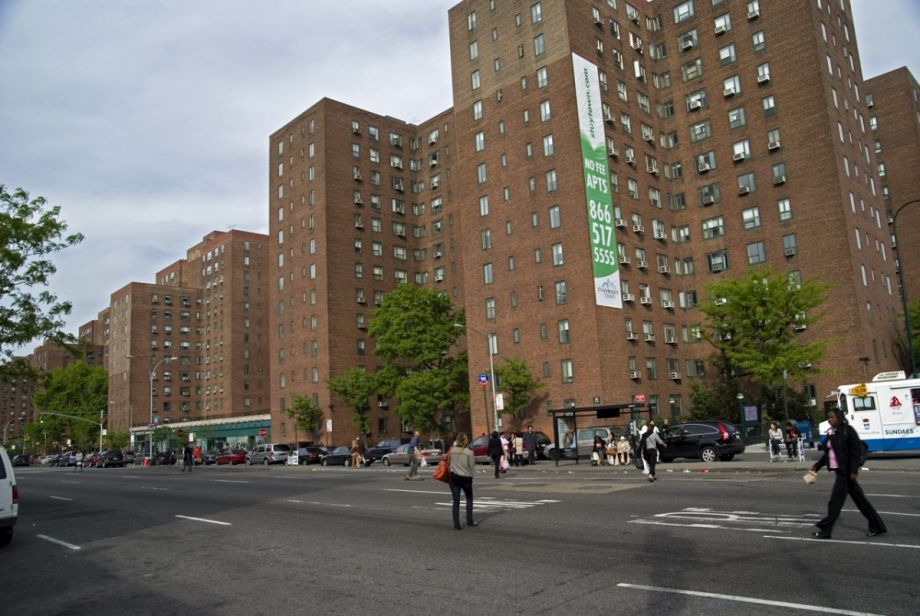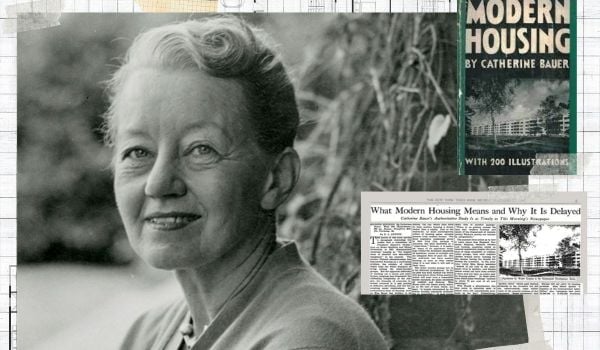In 2014, shortly after New York City Mayor Bill de Blasio took office, the city released a housing plan that set a goal of building and preserving at least 200,000 units of housing over the next ten years. At the time, Jessica Katz was working as an assistant commissioner in the Department of Housing Preservation and Development (HPD), which is in charge of making and implementing New York’s housing plans. The department “had a kind of clarity of purpose and ability to execute that government is not often known for,” Katz says. The numerical goals had a way of focusing people’s attention. So when she left city government, right around the time the city released “Housing New York 2.0,” increasing the preservation and development goal to 300,000 units, she had a strong sense of what that energy could accomplish.
“I just want to figure out,” Katz says, “how to bottle that towards other things than just counting units.”
Today, Katz is executive director of the Citizens Housing & Planning Council (CHPC), an 80-year-old nonprofit that focuses on housing and planning policy in New York. Last fall, CHPC launched a research initiative called A New Lens for NYC’s Housing Plan, and this month, the group has started issuing a series of policy briefs, exploring how the city’s housing plans might change if they were pointed at achieving different social goals. “What if the goal of the next housing plan was to improve the health of New Yorkers?” one asks. “How would we measure our success if the next housing plan was feminist?” says another. Two additional briefs are focused on advancing racial equity, and meeting the needs of the city’s immigrants.
The briefs are meant to generate creative thinking about how the production and preservation of affordable housing can meet other needs. The “Feminist Housing Plan” brief, for example, notes that women earn 80 percent of what their male counterparts earn, that three quarters of families in New York’s public housing units are headed by women, that 41 percent of households in homeless shelters are there because of domestic violence, and that 86 percent of single parents, for whom paying the bills is a particular struggle, are women. “Including a gender equity lens in the next housing plan could create a lasting, positive impact on how and where women and their families live,” the brief concludes.
“I want to get people’s minds working about the idea that you need to start with what your goals are and then work toward the metric and the tactics after that,” Katz says. “One of the things that I think counting units doesn’t do is answer the question of why or for whom, and those are questions that were hotly debated as these plans came out.”
Housing plans in other cities are released according to various legal and political protocols, Katz says. In New York, a new housing plan is typically released earlier in a new mayor’s term. De Blasio’s second and final term as mayor will conclude at the end of 2021. So housing advocates in New York are expecting a new housing plan shortly after that. And Katz and others say now is the time to think about what the plan could and should achieve.
The Citizens Housing and Planning Council is joining a host of other housing groups as part of a campaign called “United for Housing,” which will push 2021 mayoral candidates (former HUD Secretary Shaun Donovan and retired Army brigadier general Loree Sutton have both formally announced their candidacies) to make certain commitments as part of their housing plans. The campaign is being convened by the New York Housing Conference, a nonprofit advocacy group and coalition of “nonprofit and private developers, owners, managers, professionals, and funders of affordable housing.” Rachel Fee, executive director of the New York Housing Conference, says that the “big tent” coalition will inevitably need to find an advocacy position that all of its members can endorse. But there is room to think about what goals the housing plan might pursue beyond a number of units.
“Right now the city spends about a billion dollars a year on [the Department of Housing Preservation and Development],” Fee says. “The homelessness budget is more like $2 billion a year. We have a crisis in our public housing. So we’re trying to take a step back and say, how do we want our housing investments prioritized? What problems should [the plan] solve besides just adding to supply?”
It’s not likely that the campaign will adopt one specific lens like those that are outlined in CHPC’s briefs, Fee says. But it’s important to think about more than just supply. Lately, there has been a lot more discussion specifically about racial equity in the housing market, Fee says. And not just in New York, but in many other cities. Researchers are continuing to mine the racist roots of segregation patterns in cities from San Francisco to Austin to New Orleans, and recommend housing policies that aim directly at those inequities. And those efforts are filtering up. Chicago’s new Housing Commissioner is bringing a racial equity lens to the city’s housing plans, as Next City has reported. The mayor of Minneapolis has made desegregation a centerpiece of his housing plan, too.
Fee says that prior to the 2014 housing plan, there was a broad consensus that mandatory inclusionary zoning and upzoning needed to be part of the strategy for producing new affordable housing. Since then, it’s become more clear that zoning changes need to be made in partnership with communities, and that questions about who most benefits from the city’s housing plans should be foremost.
“There’s much more awareness about the inequities and much more agreement that we need to call out those inequities and have proactive policies and programs that can address them,” Fee says.
De Blasio’s plans have focused partly on upzonings — increasing the allowable density in certain areas of the city as a way to increase the housing supply overall, Fee notes. A few years ago, a group of housing advocates began staging protests around De Blasio’s housing plan, saying that the city’s housing efforts should be focused on the lowest-income residents in the city, as The New York Times reported. Some local officials and advocates have also pushed for studies looking at the racial impacts of the city’s rezonings, amid concerns that upzonings have led to the displacement of people of color in certain neighborhoods, even as they have increased the number of units and residents overall. In January, the mayor’s office released a draft of a plan called Where We Live, which is specifically meant to reduce segregation and promote fair housing in the city’s housing investments.
The New York Housing Conference plans to release a report in September to help set a housing agenda for the mayoral campaign. Another thing that’s changed since the beginning of the De Blasio administration is the awareness of the crisis of disrepair in NYCHA properties, Fee says. Last fall, the Regional Plan Association released a report saying that NYCHA properties risked “demolition by neglect,” and calling for the formation of “a new civic coalition” to protect the city’s public housing. The United for Housing campaign could potentially function in that way, Fee says.
“Everybody agrees that public housing has to be a key priority for the next mayor …” Fee says. “People really view the preservation of public housing as central to our affordable-housing landscape in New York and that’s one example where the big tent can be really powerful.”
Katz says that CHPC is working on more issue briefs, and drawing out how the housing plan could achieve different goals. She’s hoping that the work can inspire policymakers to think beyond the obvious.
“We want to show people the idea of a new way of thinking about a housing plan, and then also give permission to the leadership that will be in charge of the next housing plan to think more creatively about what that housing plan might look like,” Katz says.
This article is part of Backyard, a newsletter exploring scalable solutions to make housing fairer, more affordable and more environmentally sustainable. Subscribe to our weekly Backyard newsletter.

Jared Brey is Next City's housing correspondent, based in Philadelphia. He is a former staff writer at Philadelphia magazine and PlanPhilly, and his work has appeared in Columbia Journalism Review, Landscape Architecture Magazine, U.S. News & World Report, Philadelphia Weekly, and other publications.
Follow Jared .(JavaScript must be enabled to view this email address)


















